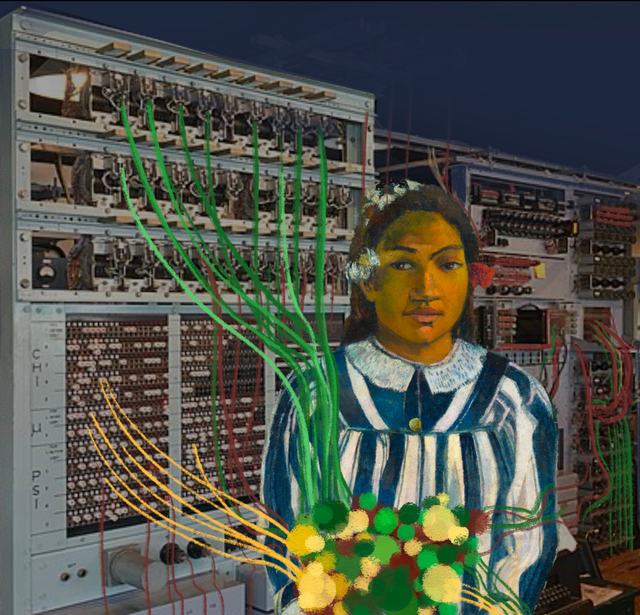Introductory Note: On Automation and Creativity
Since 2022, when the use of text and image generation with so called “artificial intelligence” became widespread use, the discourse around these tools has been either a blind faith in artificially generated content or skeptical criticism towards the amount of resources needed to create at best mediocre outputs– not to mention the ethical concerns around the perpetuation of racist bias and potential safety risks associated with developing an artificial general intelligence (AGI). To clearly state our point of view, we stand with the skeptics.
For the purpose of this text, we will move forward with the assumption that you are aware of the ethical concerns just mentioned raised by experts on the field. The purpose of this magazine is to counter-balance techno-determinist narratives around art and culture–a response to the belief that hoarding the work of artists, creatives and individuals within a database that a few pretend to exploit for profit is a way to “democratize” art. It would seem that AI companies do not to like adhering to copyright laws that protect artists and creators. Just recently, court documents showed that Anthropic had spent millions of dollars to physically scan–and destroy during the process– print books to build Claude, an AI assistant similar to chat GPT.

Automation of culture, arts and creativity should be rejected. Techno-deterministic biases try to deceive us into believing that a future where AI is the norm is just the way of progress and will happen inevitably, apparently at the cost of true human connection, emotion, and expression; that the norm for art are generic AI images, that the norm for literature and writing are mediocre AI prompt outputs.
AI tools cannot at this point replace expert creators for a couple reasons. The expert creator trains for years, even a lifetime, to master the process of iterating and solving problems through craft, which is in itself a rather chaotic process. Chaos in the creative process allows surprises and mistakes to happen. In the case of an artwork, a design project, a movie, this means arriving at solutions or final forms that are unexpected, and would not have come to be even if planned for. AI generated text or images lack this expert iteration and selection process; all these tools can really do depend upon the data they get information from, incapable of truly creating something out of thin air. In this sense, AI content is not actual creative thinking but an automated process in which elements are remixed until one version is close enough to the desired output.
Where the essence of creativity is still a meditated balance of soul, form and emotion, something that cannot and should not be reduced to machine hallucinations for profit. We believe that the value of creativity lies in the sense of serendipity, of chaos that inhabits craft. There is no one single factor that can determine the creation of futures, however, we believe that the images, things and words we engage with and how we engage with them, help shape mindsets and attitudes towards what is yet to come. Human creativity brings into existence images and stories that allow mistakes and surprises to happen, which in turn help us see flaws in our current systems. We should not lose that to automated convenience.
A magazine is by no means the solution to a foreclosed future. However, by orbiting towards alternative narratives, choosing human-curated content, telling the stories of creators outside the anglo-sphere and choosing to portray a different image of the present, we challenge the algorithmic aesthetic of media and culture. We stand against automation by default. Orbita started as an idea to counter-balance false optimism around technology and the capitalistic idea of culture as an algorithm which sole purpose is to be consumed rather than experienced. In further developing the concept of why this magazine should exist, we have adjusted this idea. Orbita is a counter-balance, but it is most importantly a hopeful guess at the future.

